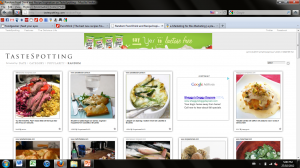Since most of my posts have been about what I have observed, I thought I’d switch it up today and share something I have learned. Now back to the question:
Do you have an e-marketing strategy?
If you answered ‘no,’ then today is your lucky day! I am going to blow your mind with six steps to crafting a digital marketing strategy. You might ask, ‘why do I even need one?’ Well, let me ask you this: Would you put up a billboard in an area no one drives in? Would you sell good old traditional bread in a gluten-free store? Would you promote water-wings to the Canadian Olympic swim team?
Probably not. So why would you spend thousands to create a beautiful site and have no one visit?
Having an e-marketing strategy can help you increase your online presence to your target market and ultimately increase profits. So let’s get down to it with six steps to help you get started:
1) Context – the first step is to examine the context of your organization. Be clear about who you are, what your identity is, and what makes you valuable. You also need to find out who your customers are and what they want. Doing research on competitors, both direct and indirect, is helpful seeing the broader scope of the industry. Finally, figure out the social, political, and economic factors and the likelihood of change in the future.
2) Objectives – keep in mind that your online marketing goals should be in line with your brand’s greater strategic objectives. These goals need to be SMART – specific, measurable, attainable, relevant, and time bound.
3) Value-Exchange – In this phase, you need to determine what value you are adding to the market. This is also the stage to take a look at other goals that support your main objectives. Exploring all options before focusing on a direction will result in a more successful path.
4) Tactics and Evaluation – With your SMART objectives in mind, you can choose from a variety of tools and tactics to help you. Here are some popular tactics used: email marketing, online advertising, affiliate marketing, SEO, PPC, Social Media, ORM, and WebPR.
5) Metrics – digital marketing should start with ROI in mind. Setting up analysis and measurement tools in conjunction with the value-exchange stage will help measure returns from the beginning. Depending on your goals, you could use Click through rate (CTR), Cost per click (CPC), or Cost per Acquisition (CPA) as some of your measuring tools
6) Ongoing Optimization – the last step is misleading because it is not a last step at all! Since your organization and the online world is a dynamic space, continuous refining and adjusting needs to take place for your business to stay relevant and successful
Now it’s your turn. Get on it!



 These are all available at under $10 each. It is tough to choose!
These are all available at under $10 each. It is tough to choose!






